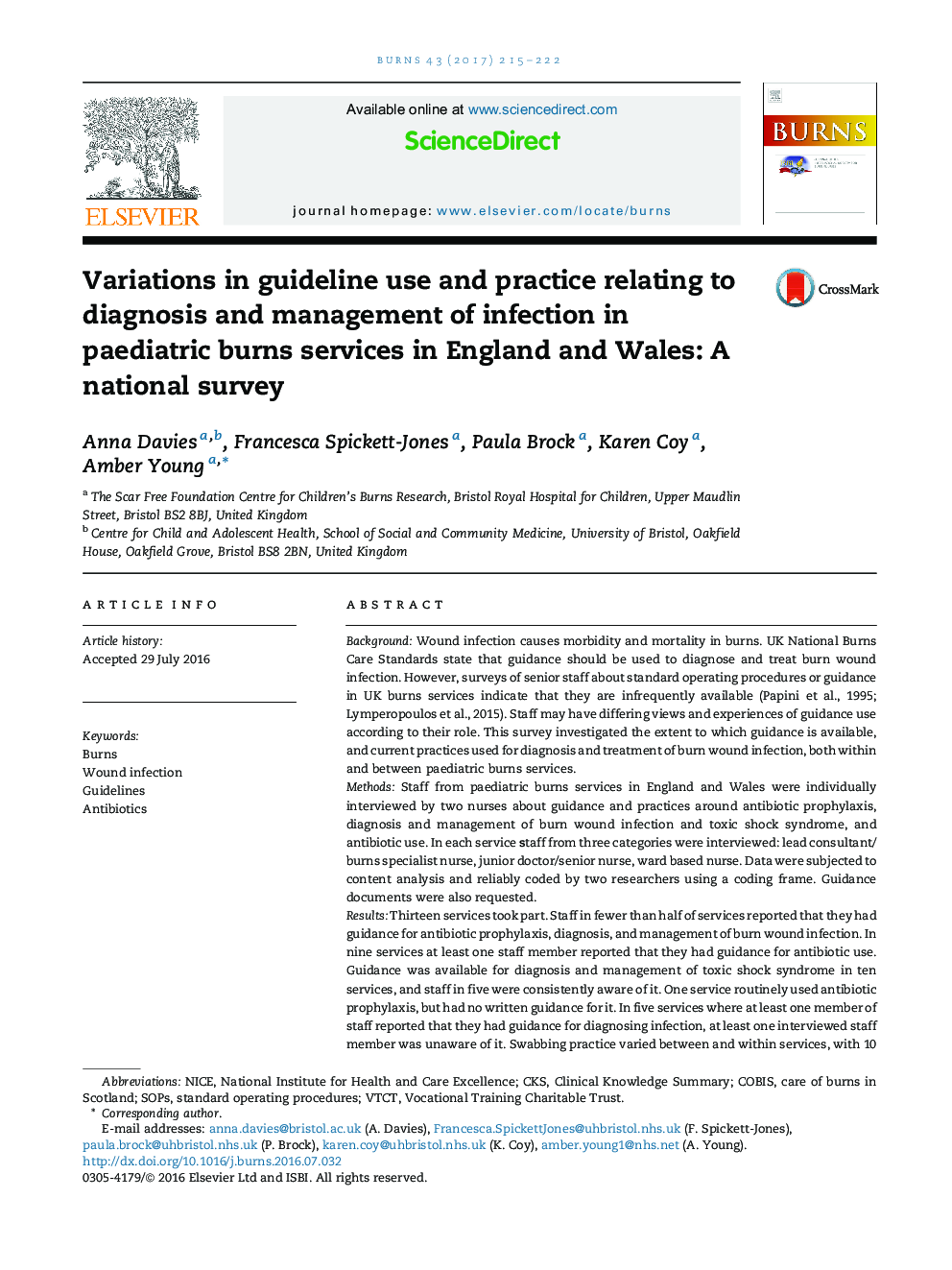| کد مقاله | کد نشریه | سال انتشار | مقاله انگلیسی | نسخه تمام متن |
|---|---|---|---|---|
| 5636131 | 1406662 | 2017 | 8 صفحه PDF | دانلود رایگان |
- Antibiotic prophylaxis is rarely used.
- Most services have guidance for diagnosing and managing toxic shock syndrome and antibiotic use.
- Fewer than half of services have guidance for diagnosing and managing wound infection.
- Staff awareness of guidance varies between and within services.
- Staff are inconsistent in swabbing practices.
BackgroundWound infection causes morbidity and mortality in burns. UK National Burns Care Standards state that guidance should be used to diagnose and treat burn wound infection. However, surveys of senior staff about standard operating procedures or guidance in UK burns services indicate that they are infrequently available (Papini et al., 1995; Lymperopoulos et al., 2015). Staff may have differing views and experiences of guidance use according to their role. This survey investigated the extent to which guidance is available, and current practices used for diagnosis and treatment of burn wound infection, both within and between paediatric burns services.MethodsStaff from paediatric burns services in England and Wales were individually interviewed by two nurses about guidance and practices around antibiotic prophylaxis, diagnosis and management of burn wound infection and toxic shock syndrome, and antibiotic use. In each service staff from three categories were interviewed: lead consultant/burns specialist nurse, junior doctor/senior nurse, ward based nurse. Data were subjected to content analysis and reliably coded by two researchers using a coding frame. Guidance documents were also requested.ResultsThirteen services took part. Staff in fewer than half of services reported that they had guidance for antibiotic prophylaxis, diagnosis, and management of burn wound infection. In nine services at least one staff member reported that they had guidance for antibiotic use. Guidance was available for diagnosis and management of toxic shock syndrome in ten services, and staff in five were consistently aware of it. One service routinely used antibiotic prophylaxis, but had no written guidance for it. In five services where at least one member of staff reported that they had guidance for diagnosing infection, at least one interviewed staff member was unaware of it. Swabbing practice varied between and within services, with 10 staff across six services cleaning before swabbing, and four staff in three services cleaning after swabbing.ConclusionsStaff from fewer than half of burns services report that they have guidance for diagnosing and managing burn wound infection, and there is variation between and within services relating to staff awareness of available guidance. There are some consistencies in practice; the majority of services do not use antibiotic prophylaxis, and there is consistent prescribing for suspected infection and tests used for infection diagnosis. Swabbing practices are less consistent. This survey indicates a need for evidence-based guidelines to be developed in order to meet national burns care standards, and for staff to be made aware of them and trained in their use. Guidelines do not need to replace clinical judgement and should be developed with the involvement of those who will implement them.
Journal: Burns - Volume 43, Issue 1, February 2017, Pages 215-222
